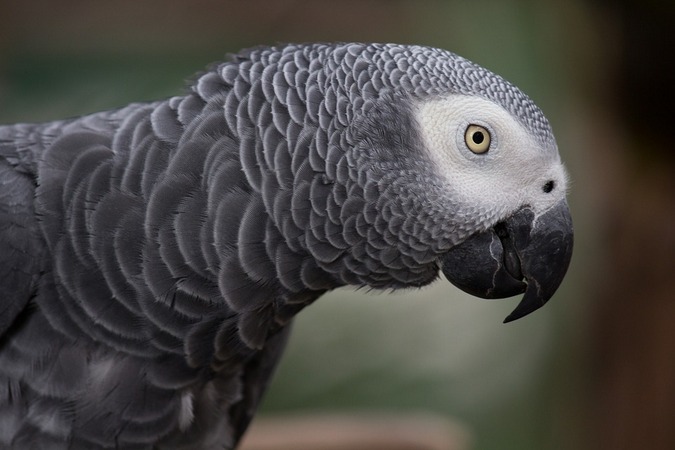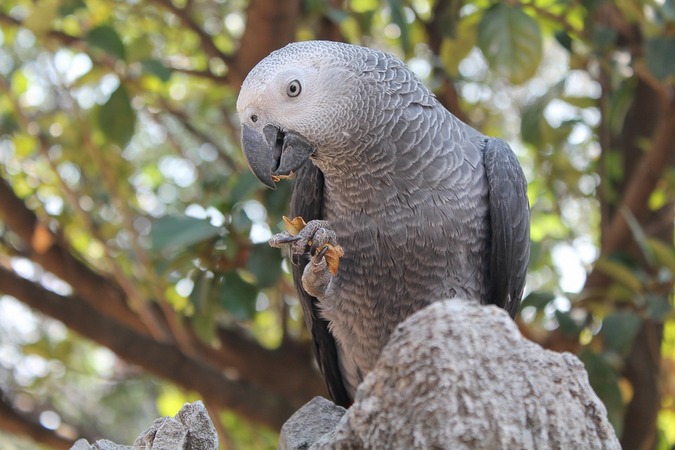
Grey parrots (Psittacus erithacus) are wild-caught from Africa in big numbers, to satisfy the pet trade. The wild populations are plummeting, implying that the trapping industry is not sustainable.
Recent research sheds light on how different capture methods and other aspects of the industry materially affect grey parrot populations. This compares to how CITES determines trapping quotas – based solely on the volume of trade.
The research was undertaken on a closed population of grey parrots on the island of Principe, off the West African coast. Trapping is permitted on Principe, and the island has a relatively stable population of wild grey parrots. Data was input into a model that ran 50-year simulations to predict the impact of different harvest scenarios on wild parrot populations.
The results were startling, and should cause CITES to reconsider the wisdom of their strategy for the determination of quotas.
A few interesting extractions from the research:
1. There is a tipping point for capture volumes, beyond which populations were highly sensitive to changes. A harvest rate of 11% was described as ‘robustly sustainable’ whereas 15% was ‘dramatically unsustainable’ – a fine line indeed;
2. The inclusion of even a small number of adult birds in capture volumes impacted negatively on population sustainability. On the island of Principe, only young birds are harvested, with adults being spared. This is not the case on mainland Africa, where we see indiscriminate mass trapping of individuals of any age class from roosting and feeding sites;
3. High annual variation in capture rate (reflecting poor management) impacted negatively on population sustainability;
4. Destruction of habitat also effects grey parrot population sustainability, a factor not present on Principe, where sufficient habitat and secure nest sites exist.

Concerns about the sustainability of current levels arise not only from the sheer volume of parrots in trade, but also from the birds’ poor resilience to over-harvesting, inadequate enforcement of trade regulations and the absence of reliable population and demographic data to support harvest models.
If trade in parrots is to continue sustainably it will require reliable demographic and harvest data and must eliminate instability in quota observance (exceeded quotas are not compensated by shortfalls in other years) and, especially, the indiscriminate capture of adults.
To read more about these intelligent birds read Shades of Grey.
Full report: ScienceDirect – Simon Valle, Nigel J.Collar, W. Edwin Harris, Stuart J. Marsden: Trapping method and quota observance are pivotal to population stability in a harvested parrot
To comment on this story: Login (or sign up) to our app here - it's a troll-free safe place 🙂.![]()
HOW TO GET THE MOST OUT OF AFRICA GEOGRAPHIC:
- Travel with us. Travel in Africa is about knowing when and where to go, and with whom. A few weeks too early / late and a few kilometres off course and you could miss the greatest show on Earth. And wouldn’t that be a pity? Browse our ready-made packages or answer a few questions to start planning your dream safari.
- Subscribe to our FREE newsletter / download our FREE app to enjoy the following benefits.
- Plan your safaris in remote parks protected by African Parks via our sister company https://ukuri.travel/ - safari camps for responsible travellers






